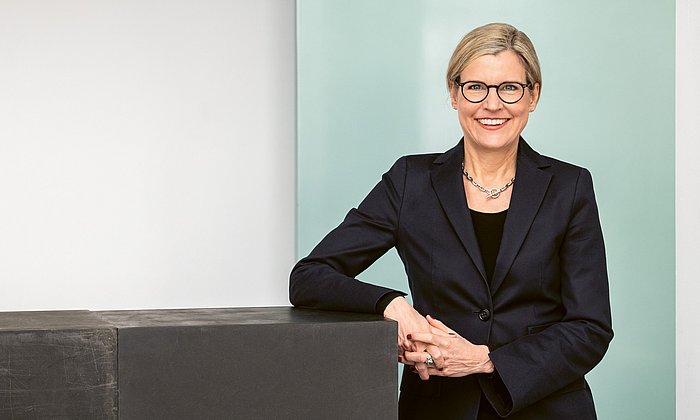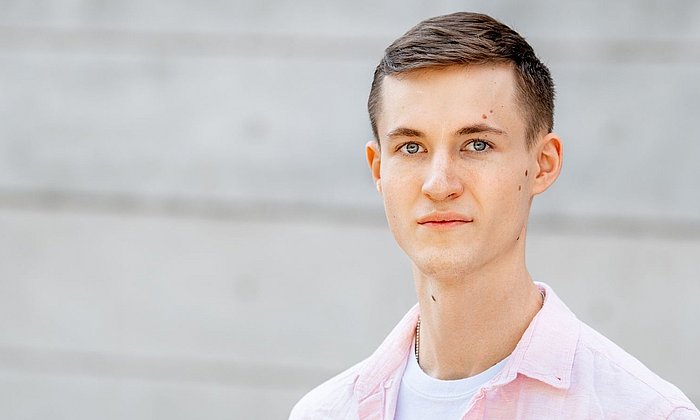In Australia with civil engineer Tobias Teschemacher
Doing research down under

When I landed in Brisbane at the end of 2019, a very special sight awaited me: in November it’s springtime in Australia and the jacarandas are in bloom. The blossoms of this fragrant tree cover the entire region around Brisbane in deep violet – an impressive display of color that was actually part of the inspiration behind the official logo of the University of Queensland (UQ) in Brisbane.
On arrival at UQ, my goal was to complete an important series of experiments for my Ph.D. thesis on masonry walls in the extremely well equipped UQ laboratory and to establish an open-source simulation program there that we are co-developing at TUM. And I thought I would do all of that within seven months. My schedule was tight and I couldn’t properly plan the experiments until I was onsite. That was no problem, however, because I had very good connections to the partner university through the Joint Supervision Program of the TUM Graduate School and the UQ Graduate School. I was part of the Structural Engineering research group and had two thesis supervisors at UQ.
Suddenly: a pandemic
However, my tight schedule was turned on its head by the global COVID pandemic: all of our experiments were suspended. The German embassy strongly advised me in early April 2020 to return to Germany due to the high level of uncertainty. But with my test stands already set up, which would have blocked everything in the lab, I couldn’t just leave. Thanks to the support at UQ I managed to extend my foreign visa quickly and easily. That meant that I could stay in Australia for the time being.
Successful experiments
Fortunately the pandemic situation in Brisbane improved within a short time. This enabled us to continue our experiments. The extension of my stay due to the pandemic was also a blessing for me in a way because I was actually able to expand my program of experiments: With various experimental setups I was thus able to generate reference values to simulate masonry slabs with the dedicated support of the highly professional team in Brisbane.
I also had the opportunity at UQ to participate in another series of experiments to test the characteristics of concrete-filled fiberglass reinforced plastic tubes referred to as GFK tubes. In these experiments, bullets weighing around 10 kilograms were fired at the test bodies. In the end the research team showed that the concrete bodies without GFK tubes did not come close to withstanding the stresses, whereas the bodies with the tubes suffered only minor damage. An important insight for the cost-effective optimization of building components.
I was also able to achieve my second objective for my stay at UQ: I established our simulation software there. After sharing our knowledge with the Brisbane team through workshops, I was able to recruit UQ researchers for the project. Since then they have been making regular contributions to the ongoing development of the software. It was also a big help that I was able to work with a local company in Brisbane that provided a lot of input to our project.
At the other end of the world
I also experienced a lot in Australia apart from my work at UQ: Brisbane is Australia’s fastest-growing metropolis and is only about an hour from the coast. The region has a subtropical climate with warm winters and very hot summers – and the occasional long and steady downpour. With the Great Barrier Reef, which begins just to the north, the region offers endless opportunities for divers to explore the diverse underwater world with shipwrecks, many different shark species, manta rays and reefs.
A major challenge during a research stay at the other end of the world is definitely the time difference. When I urgently needed to arrange a video call with my thesis supervisor at TUM, we sometimes arrived at the following compromise: he would be sipping a beer at 10 pm in Munich while I drank a good cup of coffee in Brisbane at 6 am. The advantage was that, at that time of day, he could often give me an appointment at short notice despite his busy schedule. Fortunately I got along very well with my colleagues onsite and was able to make a lot of new contacts. This made my research exchange, which ended up lasting a year and a half, a truly unforgettable experience.
Flagship partnership with the University of Queensland:
TUM and UQ in Brisbane, Australia, have been collaborating in the fields of sustainability and the bioeconomy, digital agricultural and food sciences, hydrogen technology and green energy production, as well as precision medicine since 2021. In its flagship partnerships, TUM aims to develop innovative, future-oriented fields with a broad impact. This includes joint research projects as well as exchange programs for students and support programs for entrepreneurs. TUM has also entered into flagship partnerships with Imperial College London and Tsinghua University in China.
In addition, the TUM Graduate School has established a joint supervision program for doctoral candidates with the University of Queensland. Under the program, participating Ph.D. students have a supervisor at TUM as well as UQ from the start of their project.
Technical University of Munich
Corporate Communications Center
- Tobias Teschemacher / Lisa Pietrzyk
- lisa.pietrzyk@tum.de
- presse@tum.de
- Teamwebsite





![Deborah Terry, Praes Hoffmann [Translate to en:]](/fileadmin/_processed_/a/5/csm_20210419_TUM_UQ_Flagship_Partnership_AE_16x9_Mont79_fe41c8abd1.jpg)